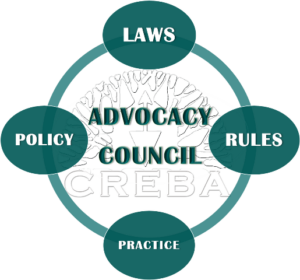Prior to the Martial Law regime, local government units (LGUs) exercised the power to regulate land and housing development activities.
Lacking central coordination and planning, rules and standards varied from one locality to another, thus creating a developmental nightmare.
CREBA thus advocated regulatory centralization. In response, then President Ferdinand Marcos created the National Housing Authority under Presidential Decree (PD) 757 of 1975, and PD 957 of 1976, otherwise known as the Subdivision and Condominium Buyers Protective Decree.
PD 957 conferred upon the National Housing Authority (NHA) the exclusive jurisdiction to regulate the real estate trade and business, and prescribed development standards and regulatory requirements.
Later, as NHA’s efficiency suffered due to its dual role of undertaking government-housing production and at the same time regulating private sector production, CREBA advocated the creation of the Human Settlements Regulatory Commission (HSRC) to spin off the central regulatory powers of the NHA and thus enable it to effectively focus on government housing production.
The advocacy resulted in the issuance of Executive Order (EO) 648 of 1981, the charter of the HSRC (now known as the Housing and Land Use Regulatory Board (HLURB). The HLURB’s development standards and guidelines, promulgated in continuing close collaboration with CREBA, have since then governed the approval and licensing process for land and housing development nationwide.
While PD 957 was intended primarily to protect buyers, close collaboration between the government and CREBA in its formulation and implementation served to temper its onerous provisions and balance the interests of both the buyers and the industry.
Since then, CREBA has played a major, often-vocal role in ensuring that this fragile balance remained undisturbed.
Liberalizing the Open Space Requirement
In 1977, CREBA called for the reduction of the 30% open space requirement imposed under PD 953, which provided that the requirement was on top of the area allocated for roads and alleys. CREBA contended that the requirement would translate to a recovery rate (i.e. buildable or saleable area) of only 40%. To achieve cost recovery, the portion of the land acquisition cost pertaining to the non-saleable area would have to be absorbed by the saleable area, thus jacking up selling prices by as much as 150%.
On the strength of CREBA’s arguments, the administration responded with the amendatory PD 1216, issued in October 1977, under which the 30% requirement was amended to include roads and alleys.
Social Housing – Liberalization of Development Standards
Prior to 1982, only high-cost high-priced housing packages could be produced, due to the stringent land development and housing construction standards under various laws, particularly PD 957.
Thus, as localities urbanized and cosmopolitan housing villages started to mushroom, the housing needs of the poorer segments of the population in urban areas were neglected. A few were lucky to become beneficiaries of tenement housing constructed by the NHA; majority of the households made do in shared cheap rental housing; and the squatter population started to burgeon.
Responding to the fast deteriorating situation, CREBA advocated a law to enable the production of low-income housing.
This led to the enactment in 1982 of Batas Pambansa (BP) Blg. 220 , otherwise known as the Social Housing Law.
To demonstrate that it would be viable for developers, CREBA Founder Manuel Serrano was among the first to develop low-cost housing under BP 220 standards. Encouraged by the commercial success of Serrano’s pilot projects, other developer followed suit.
Opposition to Detrimental Congressional Bills
Over the years, several congressional bills have been proposed to amend PD 957. Among the proposed amendments were:
- Reverting the 30% open space requirement under PD 953.
- Requiring that all License to Sell shall be issued only upon completion of at least 30% of the project, whereas another bill sought to ban the disposition of subdivision lots or issuance of building permits until full completion of the project. This would have meant an effective ban on pre-selling, which would have translated to considerably higher prices of housing packages, considering the long gestation period of housing production, the capital-intensive nature of the business which necessitates substantial borrowings, and the high interest rate regime obtaining in the country.
- Requiring applicants for a License to Sell to post a performance bond equivalent to 50% of the cost of the uncompleted portion of the project. This would have penalized the industry with an unnecessary cost burden.
- Authorizing the HLURB to pass on to homeowners’ associations its authority to take over abandoned projects.
Due to CREBA’s vocal opposition, the proposed amendments did not prosper.
Collaboration in Revising Development Standards
In 2000, the HLURB sought to amend the Implementing Rules and Regulations (IRR) of PD 957 and BP 220. In its position paper, CREBA questioned the wisdom of the amendments that would impact on socialized and low-income housing. Consequently, the amendments were held in abeyance.
In 2002, the HLURB again undertook to amend the IRRs with more stringent rules and requirements. Again, CREBA objected, and submitted another position paper detailing alternative recommendations.
Some 80% of these recommendations were adopted by the agency.



